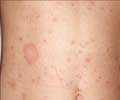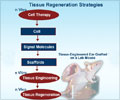A new mechanism by which certain adult stem cells suppress their ability to initiate skin cancer during their dormant phase has been identified by scientists.

Hair follicle stem cells, the tissue-specific adult stem cells that generate the hair follicles, are also the cells of origin for cutaneous squamous cell carcinoma, a common skin cancer. These stem cells cycle between periods of activation (during which they can grow) and quiescence (when they remain dormant).
Using mouse models, White and Lowry applied known cancer-causing genes to hair follicle stem cells and found that during their dormant phase, the cells could not be made to initiate skin cancer. Once they were in their active period, however, they began growing cancer.
"We found that this tumor suppression via adult stem cell quiescence was mediated by PTEN, a gene important in regulating the cell's response to signaling pathways," White said. "Therefore, stem cell quiescence is a novel form of tumor suppression in hair follicle stem cells, and PTEN must be present for the suppression to work."
Understanding cancer suppression through quiescence could better inform preventative strategies for certain patients, such as organ transplant recipients, who are particularly susceptible to squamous cell carcinoma, and for those taking the drug vemurafenib for melanoma, another type of skin cancer. The study also may reveal parallels between squamous cell carcinoma and other cancers in which stem cells have a quiescent phase.
Source-Eurekalert
 MEDINDIA
MEDINDIA




 Email
Email










